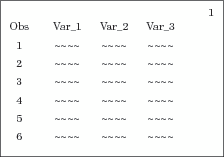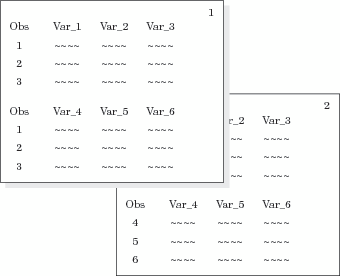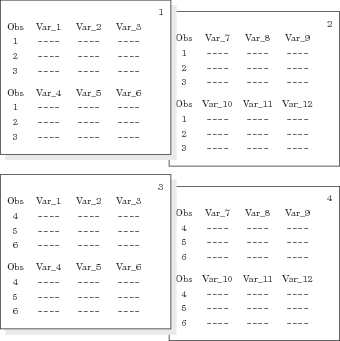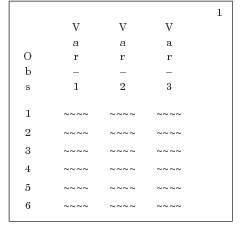PRINT Procedure
- Syntax

- Overview
- Concepts
- Using
- Examples
 Selecting Variables to PrintCustomizing Text in Column HeadingsCreating Separate Sections of a Report for Groups of ObservationsSumming Numeric Variables with One BY GroupSumming Numeric Variables with Multiple BY VariablesLimiting the Number of Sums in a ReportControlling the Layout of a Report with Many VariablesCreating a Customized Layout with BY Groups and ID VariablesPrinting All the Data Sets in a SAS Library
Selecting Variables to PrintCustomizing Text in Column HeadingsCreating Separate Sections of a Report for Groups of ObservationsSumming Numeric Variables with One BY GroupSumming Numeric Variables with Multiple BY VariablesLimiting the Number of Sums in a ReportControlling the Layout of a Report with Many VariablesCreating a Customized Layout with BY Groups and ID VariablesPrinting All the Data Sets in a SAS Library
Concepts: PRINT Procedure
Procedure Output
PROC
PRINT always produces a printed report. You control the appearance
of the report with statements and options. See the PRINT procedure examples starting for a sampling of the types of reports that the procedure
produces.
Page Layout
Observations
By default,
PROC PRINT uses an identical layout for all observations on a page
of output. First, it attempts to print observations on a single line,
as shown in the following figure.
If PROC PRINT cannot
fit all the variables on a single line, it splits the observations
into two or more sections and prints the observation number or the
ID variables at the beginning of each line. For example, in the following
figure, PROC PRINT prints the values for the first three variables
in the first section of each page and the values for the second three
variables in the second section of each page.
If PROC PRINT cannot
fit all the variables on one page, the procedure prints subsequent
pages with the same observations until it has printed all the variables.
For example, in the following figure, PROC PRINT uses the first two
pages to print values for the first three observations and the second
two pages to print values for the rest of the observations.
Note: You can alter
the page layout with the ROWS= option in the PROC PRINT statement.
(See the discussion of ROWS= option.)
Note: PROC PRINT might produce
slightly different output if the data set is not RADIX addressable.
Version 6 compressed files are not RADIX addressable, while, beginning
with Version 7, compressed files are RADIX addressable. (The integrity
of the data is not compromised; the procedure simply numbers the observations
differently.)
Column Headings
By default, spacing specifies whether PROC PRINT prints column headings
horizontally or vertically. Printing Observations on a Single Line,
Splitting Observations into Multiple Sections on One Page, and
Splitting Observations across Multiple Pages all illustrate
horizontal headings. The following figure illustrates
vertical headings.
Column Width
By default, PROC PRINT
uses a variable's formatted width as the column width. (The WIDTH=
option overrides this default behavior.) If the variable does not
have a format that explicitly specifies a field width, PROC PRINT
uses the widest data value for that variable on that page as the column
width.
If the formatted value
of a character variable or the data width of an unformatted character
variable exceeds the line size minus the length of all the ID variables,
PROC PRINT might truncate the value. Consider the following situation:



